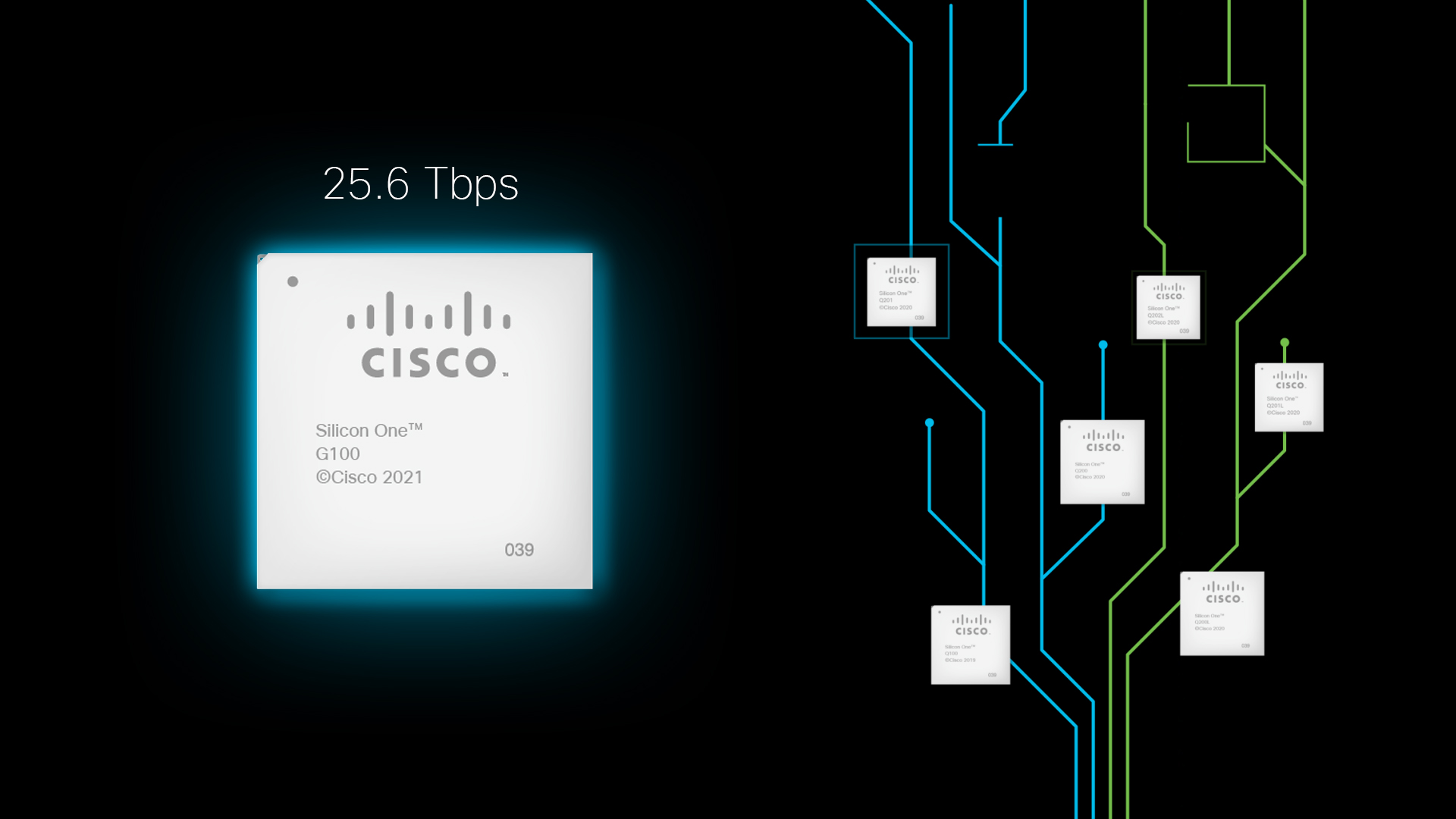- I tested a Pixel Tablet without any Google apps, and it's more private than even my iPad
- My search for the best MacBook docking station is over. This one can power it all
- This $500 Motorola proves you don't need to spend more on flagship phones
- Finally, budget wireless earbuds that I wouldn't mind putting my AirPods away for
- I replaced my Linux system with this $200 Windows mini PC - and it left me impressed
Cisco Silicon One Easily Shatters the 25.6T Barrier – Cisco Blogs

Back in December of 2019, we made a bold announcement around how we’ll forever change the economics of the Internet and drive innovation at a speed like no one had ever seen before. These were ambitious claims, and not surprisingly many people took a wait-and-see attitude. But in October of 2020, we announced six new devices where we expanded the Cisco Silicon One platform from a primarily routing-focused solution to one which also addresses the web scale switching market.
Today, less than five months from our last announcement, I’m pleased to introduce three new members of the Cisco Silicon One family which bring us to a total of 10 devices in less than 15 months. With this announcement, Cisco Silicon One now provides both the highest bandwidth routing and web scale switching silicon in one unified family. This pace of innovation is a testament to the investments we’ve made over the last six years to create the first truly scalable and multi-purpose platform in the industry.
Cisco Silicon One G100
The Cisco Silicon One G100 brings the benefits of our unified architecture to the next level with the industry’s first 25.6Tbps programmable and fully shared packet buffered device in 7nm. By extending the Cisco Silicon One family to 25.6Tbps, Cisco now provides the leading routing and web scale switching silicon. With this new device, customers no longer need to choose between programmability, bandwidth, and efficiency.
Cisco Silicon One now provides the highest bandwidth routing and switching silicon in a unified family.
By further optimizing the efficiency of our run-to-completion engines for switching, we can provide programmability with little to no power and performance tradeoff. Additionally, our unique processor allows for extensive and extendable visibility, creating the industry’s first programmable telemetry processor.
By combining many programmable functions like parsing, processing, timestamping, counters, meters, histograms, watermarks, and flow analytics we’ve created a fully programmable temporal view of traffic patterns. Done in nano-second (nSec) granularity, this programmable infrastructure allows customers to replay past events to truly understand the dynamics of their networks to troubleshoot the equipment, optimize the infrastructure, and identify malicious attacks.
With the industry’s first 1.6Tbps interface and a four times speed increase over today’s deployed 400GE interfaces, Cisco Silicon One G100 allows customers to scale-up their networks in ways that were previously impossible. Because of the innovative packet processing engines, the G100 can even process a single flow at the full 1.6Tbps.
Using 256x112G exceptional performance LR PAM4 SerDes with our incredibly low-power architecture, together with our system-first silicon design methodology, customers can build a 32x800G retimer-less 1RU system while still allowing for passive Direct Attach Copper (DAC) cables to be used within the rack, driving a new level of efficiency into their networks. To enable massive scale-out networks the G100 provides an ethernet Media Access Control (MAC) for every SerDes, allowing customers to deploy a truly scaled-out 256x100GE architecture with a single piece of silicon.
As networking speeds increase, the Cisco Silicon One fully shared packet buffer plays an increasingly important role in the network. Arbitrary traffic patterns flowing through the G100 can access the entire packet buffer, thereby enabling exceptional network performance under any congestion scenario.
The Cisco Silicon One G100 is sampling to our customers now.
Watch the video to learn more:
Cisco Silicon One Q211L
The Cisco Silicon One Q211L extends our existing 12.8Tbps Q200L, 6.4Tbps Q201L, and 3.2Tbps Q202L leaf and Top of Rack (TOR) switches. At 8Tbps with built-in 7nm with 160x56G PAM4 SerDes, customers can build optimized 40x200GE 1RU systems.
Like all members of the Q2 family, the Q211L enables customers to simplify their network design with large scale tables and support for advanced SmartTOR features Network Address Translation (NAT) and Port Address Translation (PAT) using our highly efficient run-to-completion P4 processors. Customers can optimize their network performance by using our advanced hierarchical traffic manager, fully shared packet buffering, and hierarchical Equal-Cost Multi-Path (ECMP) engines.
The Cisco Silicon One Q211L, like its other Q2 family members, is in full production.
Cisco Silicon One Q211
The Cisco Silicon One Q200 extends our existing 8Tbps Q200, 6.4Tbps Q201 and 3.2Tbps Q202 routing devices. At 8Tbps, with built-in 7nm with 160x56G PAM4 SerDes, customers can build optimized fixed systems with a combination of 10GE to 400GE ports.
The Q211 enjoys all the same benefits as the Q211L in a foot-print compatible package but adds even larger table scale and deep packet buffers for routing applications.
Conclusion
The hard dividing lines in the industry between routing silicon and web scale switching silicon are being erased, resulting in massive benefits for the industry. But convergence alone is not enough. We’re now building world-class, purpose-built devices based on our fully unified Cisco Silicon One architecture allowing our customers to enjoy the benefits of the most flexible architecture and the best individual devices.
But what excites me the most today is that this pace of innovation we’ve demonstrated is not slowing down. In fact, it’s increasing. Over the last six years we’ve laid the foundation for the next several decades of networking and are now starting to see what’s possible with the right investment, the right technology, and the right team.
Stay tuned for more!
Learn more about Cisco Silicon One architecture, devices, and benefits.
Share:

